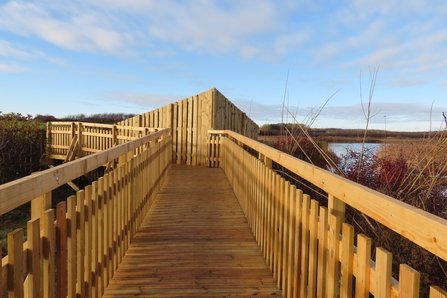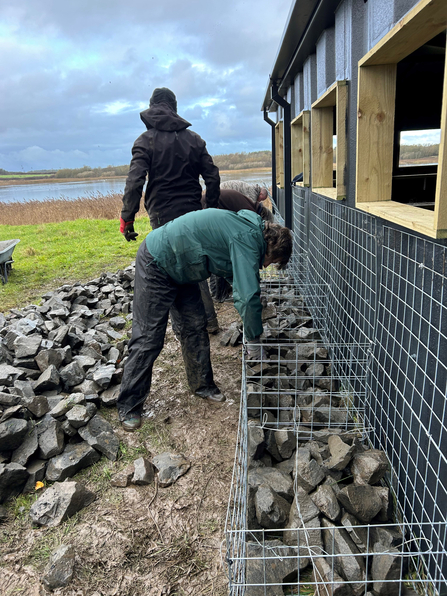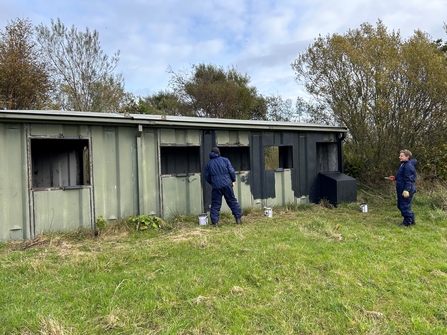
New bird hide at East Chevington. Image by Sheila Luck.

New bird hide at East Chevington. Image by Sheila Luck.
The hides were made possible as part of the wildlife charity’s five year Catch My Drift project, a three-year initiative backed by £418,000 from National Lottery players, via The National Lottery Heritage Fund, to improve the habitats, biodiversity and access on the East Chevington reserve at Druridge Bay.

Volunteers fill gabion baskets as part of the new hides’ design. Image by Sheila Luck.
Work on the hides started in October 2023 with the removal of two old hides, construction of a new platform on the south east corner of the north lake and the two brand new hides all being installed by bird hide specialists Gilleard Bros Ltd.
Now in place and ready for spring, the new structures will be welcomed by the reserve’s thousands of visitors who will be able to marvel at otters, kingfishers and a wonderful array of wetland birds. In the recent past, hundreds of golden plover gathered on the reserve on their migration and a bittern turned up for a few months.

One of the old wildlife watching hides. Image by Sheila Luck.
Since funding for the project was awarded at the start of 2020, Sophie Webster, Catch My Drift project officer and her team of 60 loyal volunteers have worked tirelessly to conserve and enhance the wildlife on the 185-hectare site.
From releasing 330 harvest mice and sowing wildflower seed over 25-hectares to recording three species firsts for the site - purple hairstreak butterfly, an emperor dragonfly and grass vetchling and North East Fungal Study Group 100 species of fungi on the site, the project has helped turn the former East Chevington Opencast Coal Site into a haven for wildlife.